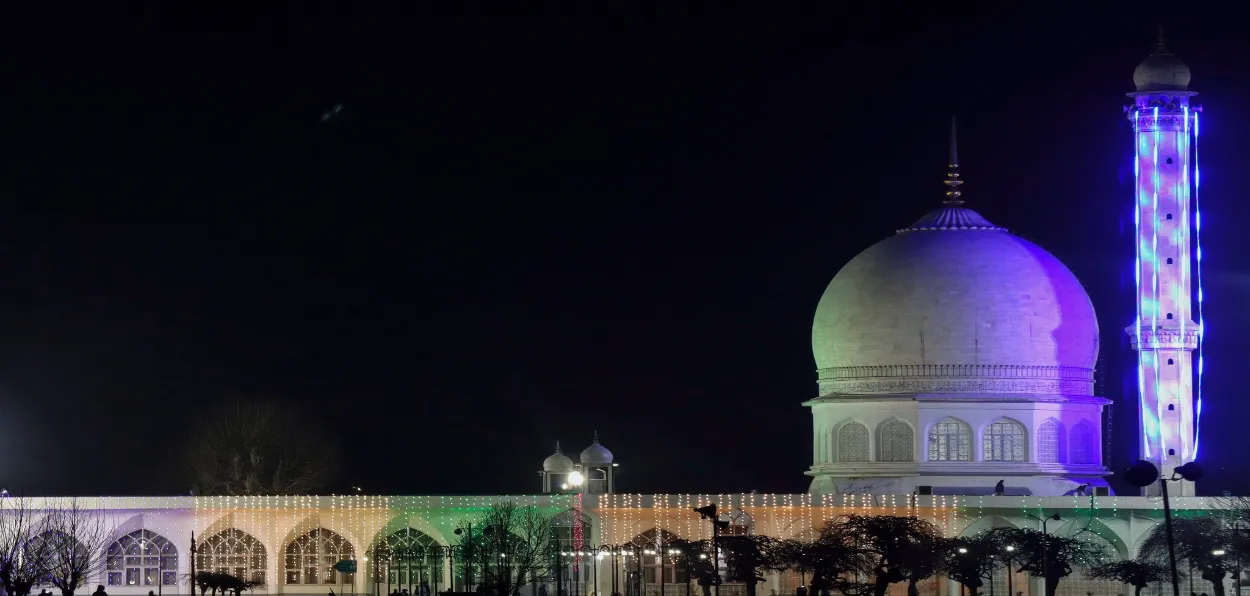
Abu Ashraf Zeeshan
The recent controversy over the installation of an inaugural plaque with the Ashoka stambha at the Hazratbal shrine in Srinagar has sparked debate across Kashmir and beyond. For many devotees, Hazratbal is not just a shrine; it is the spiritual heart of the Valley, housing the holy relic of Prophet Muhammad. Introducing any new symbol into such a sacred space naturally stirs feelings.
Yet this issue must be approached with sensitivity and perspective. The emblem, a national symbol representing justice, truth, and righteousness, was not used with malice. Rather, the problem arose because it was used without prior consultation. Shrines are not ordinary public spaces; they carry deep emotional and spiritual significance. A gesture that might seem harmless in one context may be viewed as an intrusion in another.
The lesson here is not to flare emotions but to register, gently yet firmly, that sacred spaces require greater care. The authorities could have avoided controversy by engaging local custodians and community leaders before making such a decision. A consultative approach would have preserved harmony while respecting the shrine’s sanctity.
The community’s discomfort is not with the Ashoka emblem, but with its placement. The message from Hazratbal’s devotees is clear: respect national symbols, yes, but ensure that spiritual sanctity is not compromised.
Unfortunately, extremist voices and Pakistan-based propaganda outlets have tried to exploit this episode to stoke unrest and spread divisive narratives. By hyping a sensitive issue, they want to pit faith against the nation and disturb Kashmir’s peace, and this must be rejected. Hazratbal belongs to the people of Kashmir and India; it is a symbol of spirituality, not a playground for politics. The community must remain vigilant against those who use a sensitive issue as a tool for provocation.
Islam and Local Culture: No Clash
It is also important to underline that Islam is not at odds with cultural or national symbols. On the contrary, Islam has always coexisted with and enriched local traditions wherever it spread. Kashmir is a prime example. For centuries, Islamic spirituality here has blended seamlessly with indigenous culture, be it through the poetry of Sheikh-ul-Alam (nund Rishi), or sufiyana kalam. This syncretic ethos, often called Kashmiriyat, is proof that faith and culture complement rather than contradict each other.
The Qur’an itself acknowledges diversity as part of divine wisdom: “We created you into nations and tribes so that you may know one another” (49:13). This verse is a reminder that symbols of identity, whether cultural, religious, or national, can coexist under the umbrella of shared values.
Shared Values in the Emblem
Seen in this light, the Ashoka emblem is not foreign to Islamic thought. Its values of truth, justice, and service to society are deeply resonant with Qur’anic principles of haqq and adl. The problem, then, is not about contradiction but context. When national symbols are introduced in religious sites without adequate consultation, they risk being perceived as impositions rather than gestures of unity.
At its core, this is not a story of conflict between Islam and culture. It is about process, sensitivity, and consultation. Hazratbal continues to symbolize unity, spirituality, and Kashmir’s unique ability to blend faith with tradition. Respecting this balance is the best way forward.
ALSO READ: Businessman Abdul Latif facilitated 5,000 weddings, promotes education
In a diverse society like ours, preserving harmony requires not just good intentions but wise action. The emblem itself stands for justice and truth. Honoring those values means ensuring that faith and culture coexist in dignity and respect without one overshadowing the other.
(The Author is the Vice President of MSO)
